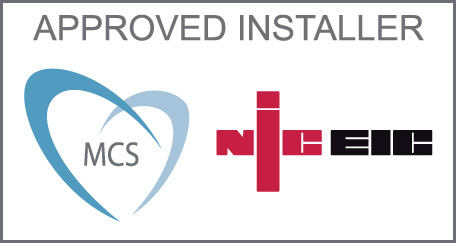
Cosy warmth.
Pleasant coolness.
Efficient energy.
O.K., we can do that!

Intelligent energy concepts. Enjoy the 3-D house.
Current news on RHI
The world´s first financial incentive of its kind to revolutionise the way heat is generated and used in buildings has been launched by Energy Secretary Chris Huhne. Tell me more...

Here you can ask questions about heating, ventilation, air-conditioning, plumbing and electrical installations. We reply – no questions asked!
Your Question:
What are the general economic advantages of heat pump systems?
Our Answer:
Despite the higher investment costs for these systems, they have a number of advantages over conventional heating systems: • low operating costs (no need to buy fuel, only 1/4 of the end-point energy is generated by electricity) • independent from fossil fuels and hence price increases • no investments needed for gas connection or oil storage tanks, chimneys, fire protection etc. • almost maintenance-free system • no inspections by chimney-sweeper • operational reliability due to closed system • numerous contributory measures offered by Federal and State Government • special tariffs offered by power companies for heat pump systems Taking into account the above-mentioned arguments for heat pumps and also the local circumstances, a faster amortisation of the system compared to, for example, a gas heating system may be possible. Opting for a heat pump system is thus not only an ecological decision, but also an economical decision.
Your Question:
How does a water-to-water heat pump work?
Our Answer:
The thermal energy of the water (antifreeze and water mixture) heated in the ground is transferred in the evaporator to the freezing agent. In doing so, the freezing agent evaporates, the compressor increases the pressure and thus the temperature, which means the second heat exchanger can transfer the thermal energy to the heating water. The freezing agent then liquefies again and reduces the pressure at the expansion valve. This way 75% of the heating energy extracted from the ground reaches the home.
Your Question:
How exactly does underfloor heating work?
Our Answer:
Unlike conventional radiators, panel heating systems distribute the warmth as a mild radiant heat. The rooms are heated from bottom to top. Mild radiant heat, even temperature distribution with a constant thermal profile from the floor to the ceiling and low air velocity contribute to an optimum feeling of comfort. Heat emitted by radiators increases air velocity. The air in the room is heated by the radiators, rises to the top and then sinks again when it reaches the opposite, cooler walls. The air starts to circulate and carries dust and other particles with it. An underfloor heating system, however, radiates heat in a more health way without moving much dust. An important aspect for persons with allergies, as the absence of dust circulation means that no dirt particles are transported through the room. In addition to this, the indoor air is not heated as strongly with underfloor heating systems and is therefore less dry. This is good for the respiratory tract.
Your Question:
What are the differences between EIB, BatiBUS, EHS, KNX and Instabus?
Our Answer:
Basically, all of these systems refer to building management bus systems. The main objectives of building management systems are to provide more comfort and flexibility. KNX basically developed out of the convergence of the bus systems in question and, consequently, is the successor to the previous three systems. In the meantime, more than 100 companies worldwide have joined the KNX standard. A clear indication that KNX will be the prevailing standard in the long term.
